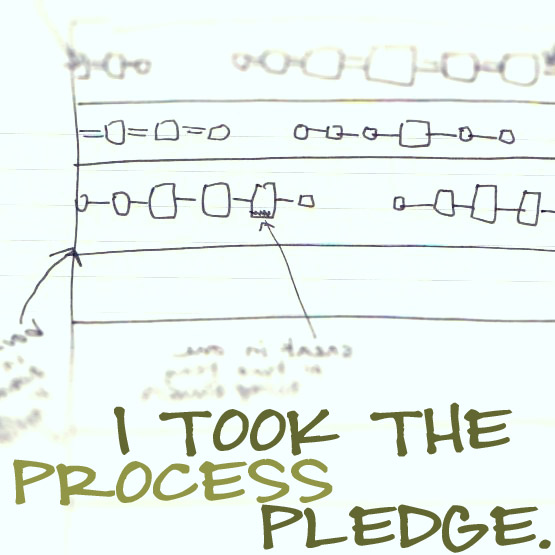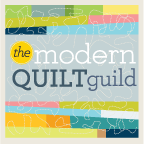One of the things I like about quilting is that it is, when all is said and done, a spectrum disorder! It is not just one thing, or one skill, but a synthesis of many, which acts both as a boredom preventive, and a serious barrier to mastery. To quilt well and happily, and I think unless you are able to turn out a relatively accomplished end product, you are not going to quilt happily, you have to master a wide range of skills. And like learning to drive a standard shift, until you master the basics, you won't be able to move on to the fun part, which is flying along a country road, preferably one with lots of dips and corners, playing Rally Driver.
Quilting basics are: cutting accurately, sewing a consistent 1/4" seam (or watch this) and being able to quilt the top creditably with at least one method.
I was not born with pretty hands. Mine are large and plain looking; you would call them "man hands". Evidently, people notice that! While in my thirties, living in Winnipeg, MB, I was working with an elderly man, an retired wheat farmer. We were chatting away when he did a literal double-take at my hands, blurting out "Whoa! With hands like those, why did your Dad EVER let you off the farm?!" I smiled at him and replied "Because he was a dentist?". I have always been grateful for my manly hands: they are strong and coordinated, deeply useful, satisfying tools. But looming arthritis in my 51 year old body is changing my approach to everything in my life. Most of what I love to do involves a huge manual component, and if I want to keep doing those things, I have to guard against over-use of my hands. These days, if I push my use envelope, I can expect numbness and stiffness. So I take good care of my hands (by the way, massage therapy really helps) and ration hard use.
Most quilting tasks are pretty easy on the hands, but one that I am no longer up for is pin basting. I can do it, but it is just the kind of activity that will get me into trouble. So it was with great joy I found the Sharon Schamber two part video on hand basting quilts, which is available on YouTube:
Part One
Part Two
I like the method, which eliminates the need to crawl around the floor, or lean over a big bed or table. But I do not like removing the threads as I quilt, so I am going to try basting with a strong water soluble thread. That way I can just move right on to machine quilting, without pesky pins and threads in my way.
Meanwhile, I get to fly down that country road a little while longer.
Saturday, March 21, 2009
Friday, March 13, 2009
One Block Wonder

In January, I decided I was ready to check out my local quilters' guild, the Boundary Bay Quilter's Guild. During show and tell, one lady brought out her remarkable quilt. It was unlike anything I had ever seen before, and I couldn't tell how she had managed to make the thing. When I learned that it was a "One Block Wonder" quilt, and that a workshop would be held in my local quilting store, I signed up! (the photo above is from the website of Picton Fabric World)
Although I admire the expertise that goes into them, I am not a big fan of abstract or art quilts...but I love these One Block Wonders. Suitable fabrics should have long repeats and also discrete areas of contrasting colour (you know those little notes in the selvedge detailing manufacter, collection and colourway dots? one of those notations is printed per repeat). Since you will be constructing hexagons from identical triangles cut out of the fabric, you can preview your fabric in the store by taking along two small hand mirrors taped together:

You cut six repeats of the fabric, layer them so that they are exactly matched (there is a pinning technique), then cut 60 degree equilateral triangles. You then fan out the triangles, and this gives you a hexagonal, kaleidoscope-like block. Depending on which side of your triangle faces out, you can choose from three different looks to your block:



Which do you like best??
You then, following a few arcane steps, assemble the hexagons, preview their layout on your design wall, and then sew them together in the arrangement that pleases you most. As you cut and preview the hexagons, you have the excitement of never knowing what you will get, and the pleasure of seeing what you do! Addictive!
Here are my first blocks, up on my workstation design wall (fabric is from the Harmony collection by Henry Glass):

The Rouse Mouse
With my youngest of an age where I can now begin to take more time for myself, I decided to return to quilting. In the twenty years I had put my sewing aside in favour of small people, who are not compatible with projects requiring either pins or concentration, quilting has utterly changed. Cardboard templates and scissors, and the debate over whether it is really quilting if you use a sewing machine, are long gone. Facing rotary cutters, strip piecing, Roxanne's glue and specialty rulers, I decided it would be best to start at the beginning again. I enrolled in a Quilting 101 class, this one by Brenda Brayfield of "Log Cabins Rediscovered by Machine" fame, followed it up with her Quilting 201 class...ok, that was humbling...and have become absorbed by my new, or at least rediscovered, passion.
I have quickly discovered that while I love working with colour, I am very bad at thinking up colour schemes in my head. So one day, whilst trolling through the internet researching 5.5 mm feed dog Bernina sewing machines (which are fab for piecing), I came across the delightful website paperandthreads.com. Here, Shirley posts her daily work in sketches and watercolours, and instantly I could see that her explorations of colour could help me refine my quilter's eye. Shirley also quilts, by the way!
But as I scanned her diary of sketches, I was riveted by her photos of small toys she had made for her grandchildren. Rice mice, she called them, and documented the very touching story of their appearance in her life. Years ago, one of her professors learned that his young wife was suffering from a terminal disease. Her name was Gunvor, and she was determined to leave behind mementos of her life, so that her young children would remain connected to both Gunvor and her heritage. To that end, she wrote Rice Mice are Nice and How to Make One. Long out of print (a reprint is currently being considered), Shirley still distributes the pattern to interested parties on the condition a photo of the finished Rouse Mouse is sent back to her and on to Gunvor's husband Sam. I agreed to that condition, and produced this little fellow for my little cousin Amber. I went on to make one for niece Madeleine, and more for myself. I like to tuck them into the gifts I send new babies; they are perfect for the new older sibling. And they are cheery, perched on my worktable.
Fabric used was Timeless Treasures Cuddle Flannel Swirls; eyes are bulk purchased from a bowling collection, and the whiskers can be crochet cotton, tatting yard, waxed thread, whatever you prefer. A piece of narrow leather lacing works well for the tail...I used chenille wool but it is not durable. Shirley stuffs her rice mice with the traditional 6-8 oz. of rice. If you stuff yours with poly as I have (for the cuddle factor), consider using a small round disc stuffed with rice in the bottom of the mouse to weight it slightly.
Update 19 October 2010
The book from which this little mouse is made is back in print!
Rice Mice are Nice and How to Make One
is available from annhayes@ionsky.comPublish Post
Subscribe to:
Posts (Atom)










